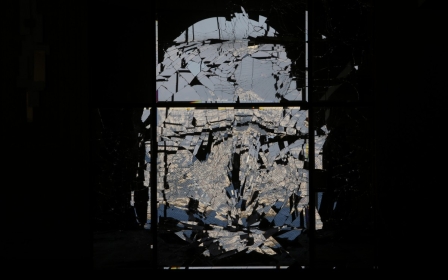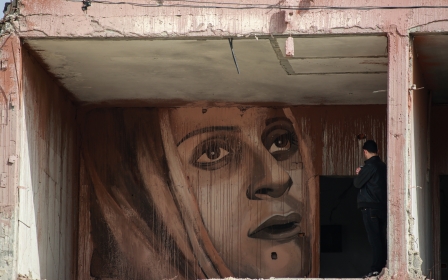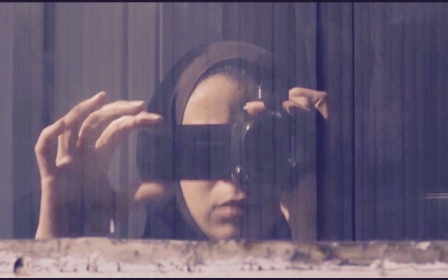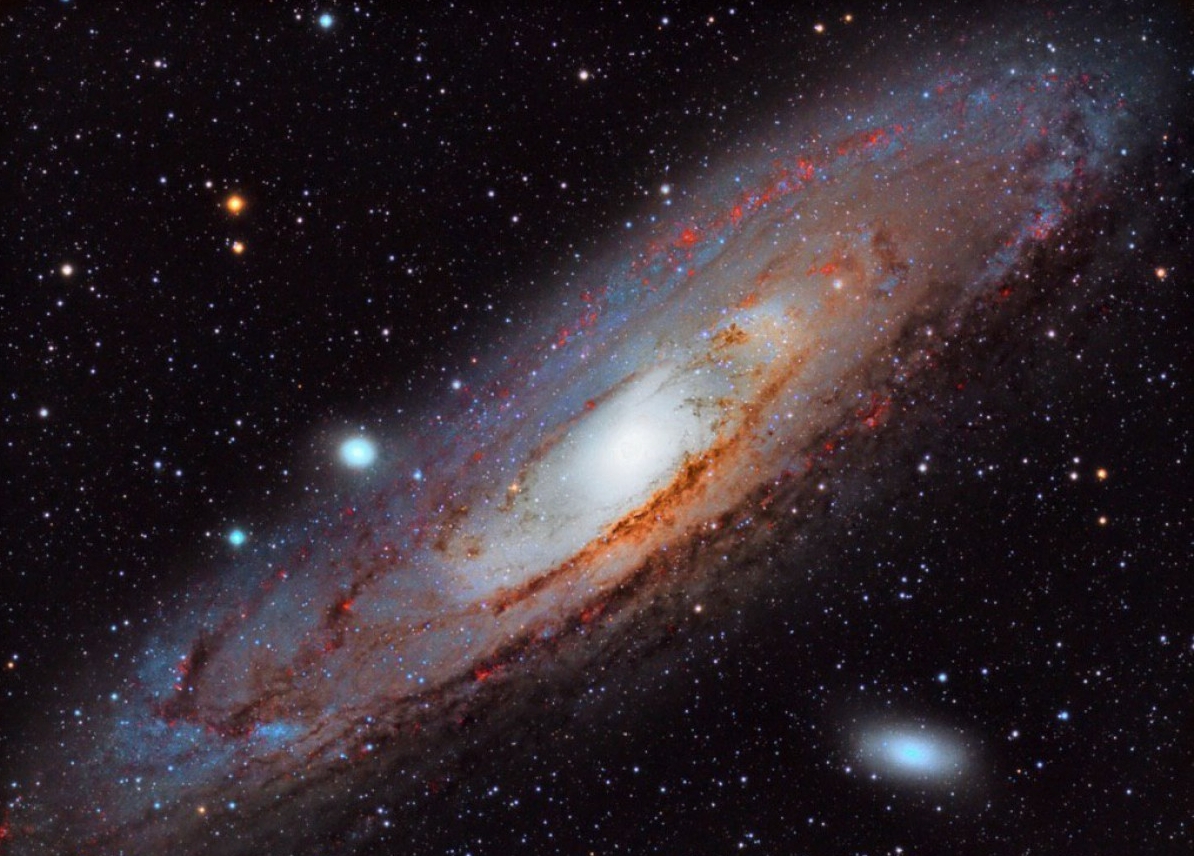
In pictures: Lebanon astrophotographers escape to the stars

As night falls over this quiet mountain lane outside Aaquora in Lebanon’s Byblos district, six Lebanese friends with a passion for astrophotography head up in search of dark skies and distant secrets of the cosmos. Every new moon they take their cameras and telescopes into the mountains, for a break from the daily grind of living in crisis-struck Lebanon. “It’s basically a pact. So it’s unbreakable. Everybody has to be there, no excuses whatsoever,” Assaad Tadros, 35 says. (MEE/Elizabeth Fitt)
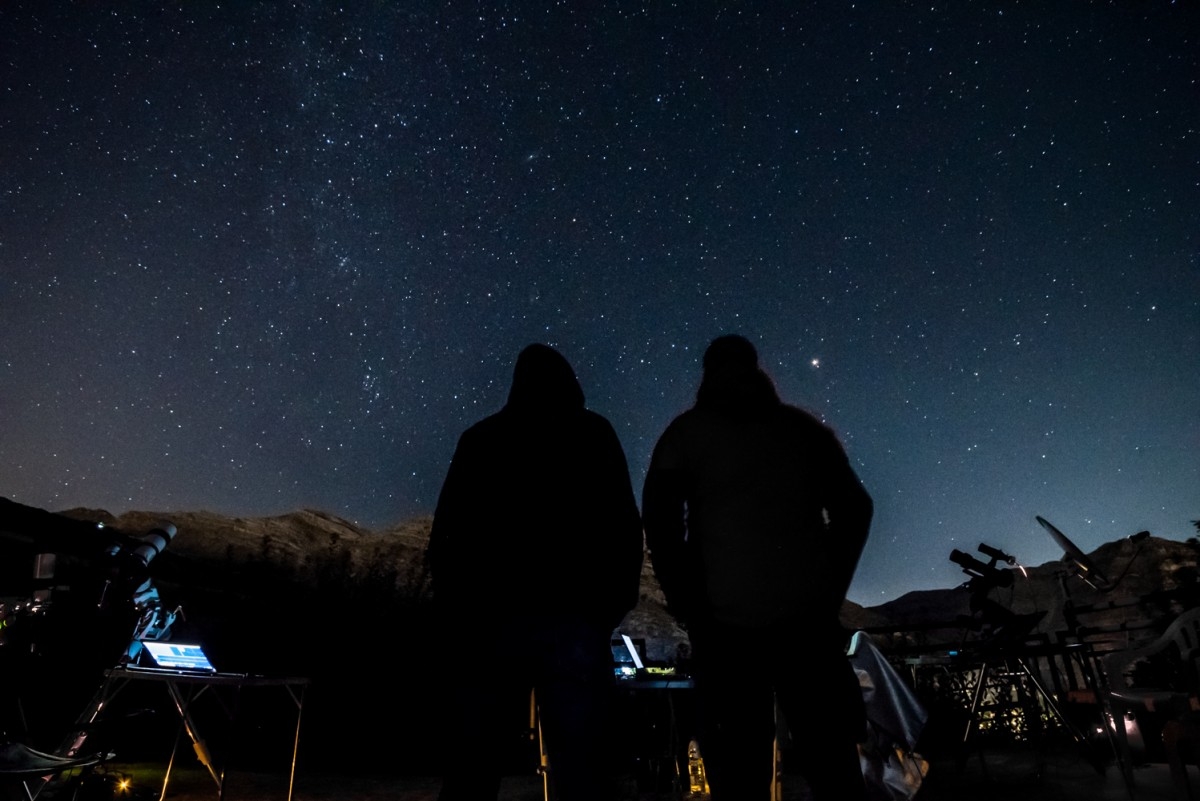
They found each other, thanks to social media, around three years ago. “Before that we were scattered,” Tadros says. “We didn’t know that other people shared our passion for astronomy and astrophotography in Lebanon.” Group member Maroun Mahfoud's photo of the Andromeda Galaxy (top image) was shot from his roof top last year.
Self-taught and like-minded, they formed the group to share experience, support each other and plan field trips – quickly shifting from astro-buddies to close friends. In this image Tadros and fellow photographer and financial analyst Daniel Caracache, 38, contemplate the heavens beyond their telescopes together. (MEE/Elizabeth Fitt)

“Heading to the mountains is an escape for all of us,” says Caracache, who shot this photo of the Running Man and Orion Nebulae, also known as Messier 42, 1344 light years from earth. “When we’re up there, it’s all about astrophotography…it’s just us and the skies. Complete and total disconnection.
"Especially nowadays with all the mess and the frustration at what’s happening - it’s much needed,” he adds. (Daniel Caracache)

Members of the group lost multiple friends to the Beirut blast just over two weeks previously. The explosion, pictured above, killed 200, injured almost 7000 and displaced around 300,000 people when improperly stored ammonium nitrate exploded with a shockwave that ripped through over 40,000 of the capital’s buildings.
Thought to be the third largest non-nuclear explosion in history, it was just the latest in a long line of what the astrophotographers sanguinely refer to as “frustrations”. (MEE/Elizabeth Fitt)

For Tadros, astrophotography is a way to experience astronomy, space and the universe: “It teaches you to be humble and get to know how insignificantly tiny you are,” Tadros. “That kind of helps when you live in a country like Lebanon.”
After they’ve made sure all their gear is set up and working well, the astro crew usually hang out, have a drink and discuss astronomy. “Sometimes it goes deeper,” he says. “We start discussing more philosophical ideas about existence and god and stuff like that – so it’s pretty much like a sort of nourishment for the soul.” (MEE/Elizabeth Fitt)
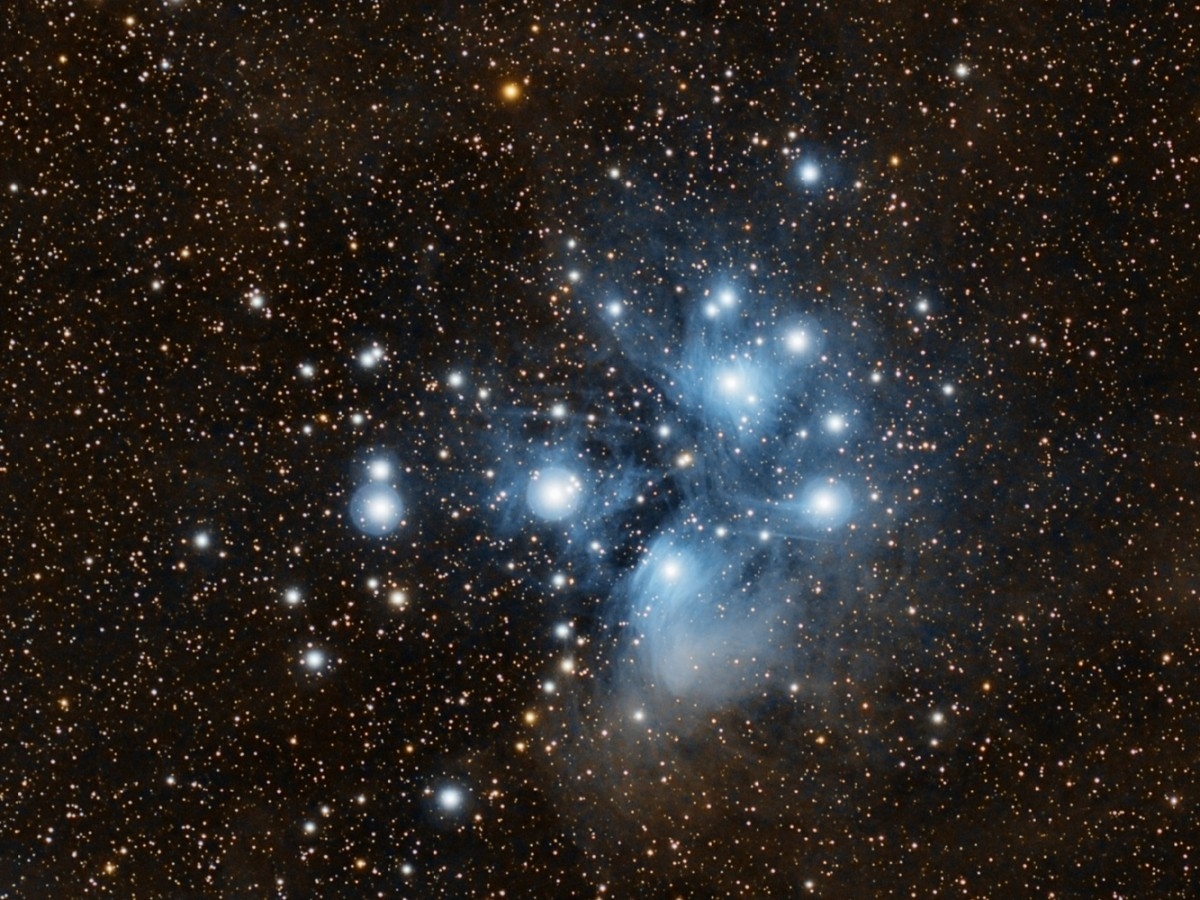
A dashboard of complex looking graphs and stats track across his laptop screen as his telescope locks on to the Pleiades star cluster, channelling ancient photons - the basic units of all light - through his camera to build an image from the distant past.
“The deeper you look, the more you’re looking into the past,” says Tadros, who shot the Pleiades, or Seven Sisters star cluster, pictured above. “It’s so peaceful, the serenity, the tranquillity. Just looking at the stars and wondering - getting away from the noise and troubles and problems and everything.” (Aassad Tadros)
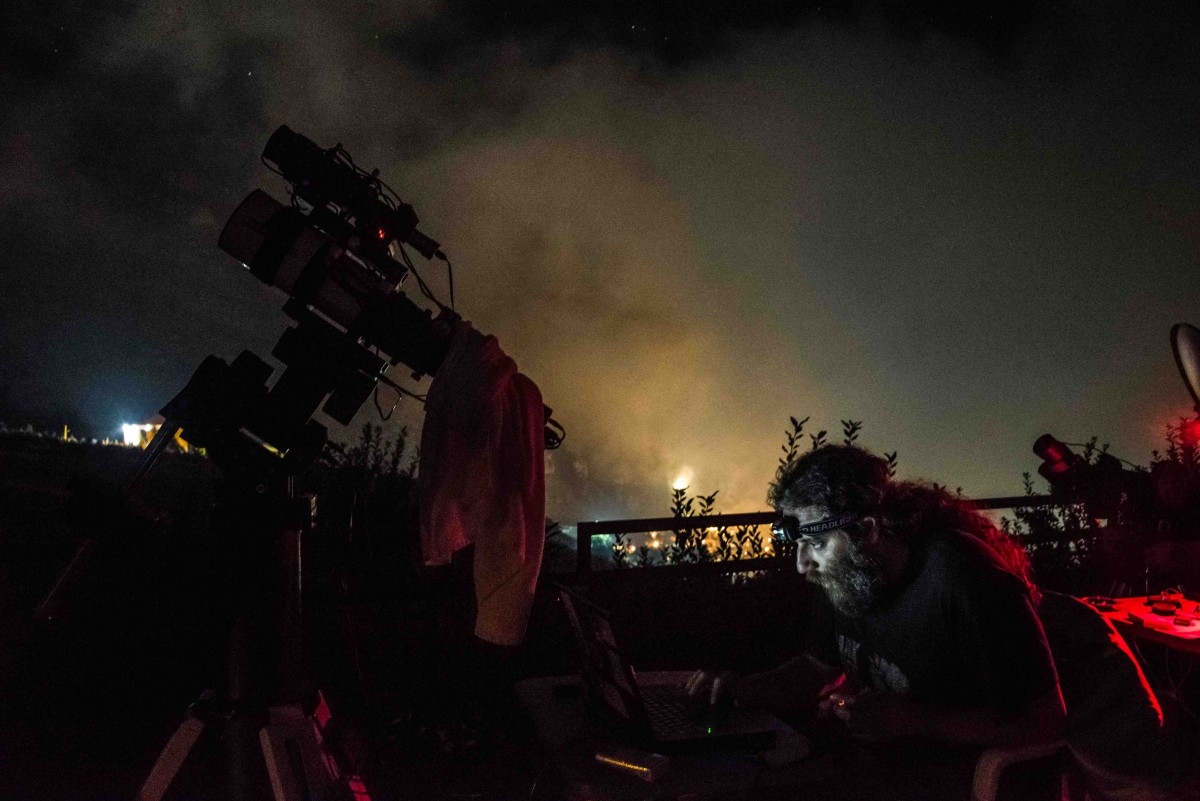
For cyber security expert and three times achiever of NASA’s Astronomy Picture of the Day (APOD), Maroun Habib, 34, it’s “just like any other hobby, we do it to enjoy it”, as he sets up his equipment in preparation for a night’s shooting.
“It starts as a hobby, later it becomes a passion and later on an obsession,” he adds. “And what I’m currently finding is it’s like my psychotherapist - imagine we’re all stuck in this city: all of us, and all this frustration.” (MEE/Elizabeth Fitt)

Habib is referring to a spiral of steadily worsening conditions, the result of government mismanagement and corruption that has mired Lebanon for decades. Extremely poor services have become normalised in everyday life in the struggling country and are now compounded by the explosion. “I guess we are frustrated with living here. Everybody has his own way of decompressing.”
One of Habib’s photos (above) from this year’s retreat shows the Triangulum Spiral Galaxy, around 2.7 million light years from earth. (Maroun Habib)
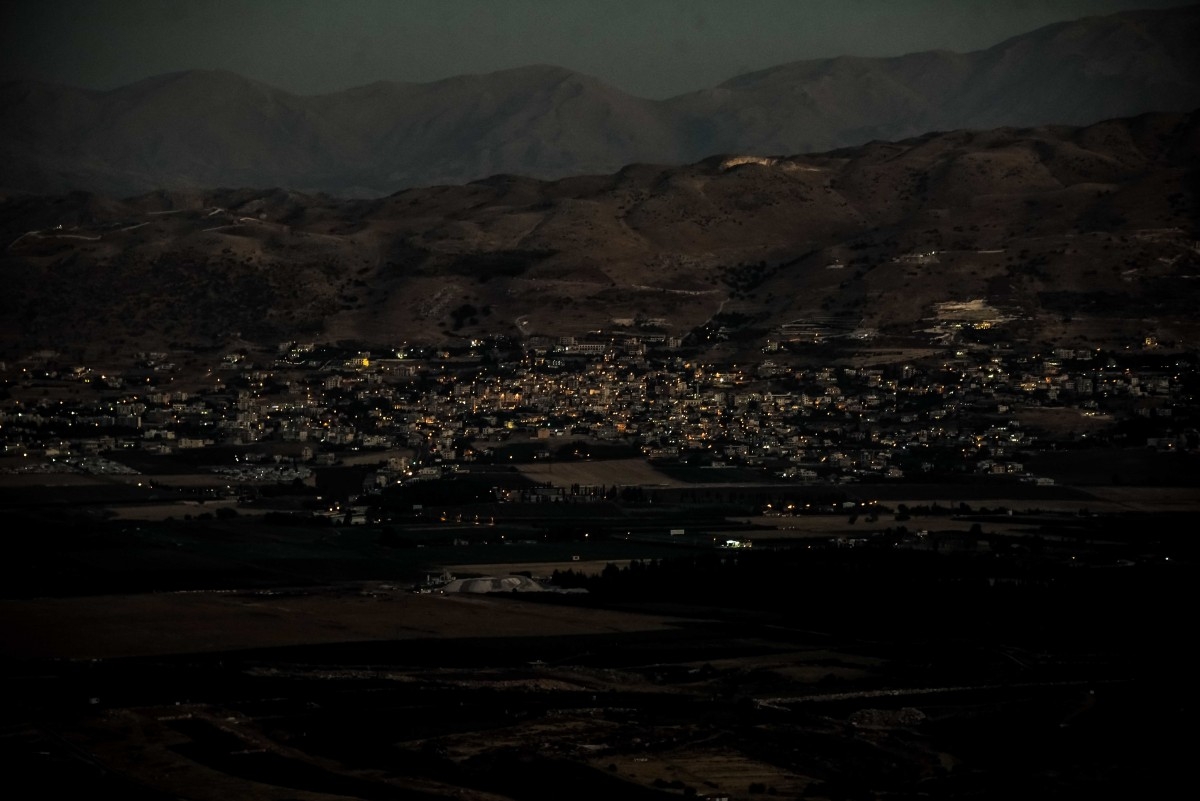
Telescopes whir gently, tracking their celestial targets while the astrophotographers chat, wrapped up warm against the chilly mountain air.
Habib says that three months ago Lebanon was exceptional for astrophotography, drawing a gale of ironic laughter from his friends and exclamations of, “Yeah – because we had NO electricity!”
This photo shows the town of Ghazze in the Bekaa Valley, with almost all its windows dark during daily power cuts often lasting 12 hours or more. The only light comes from those who can still afford to run generators, and from car headlights. (MEE/Elizabeth Fitt)
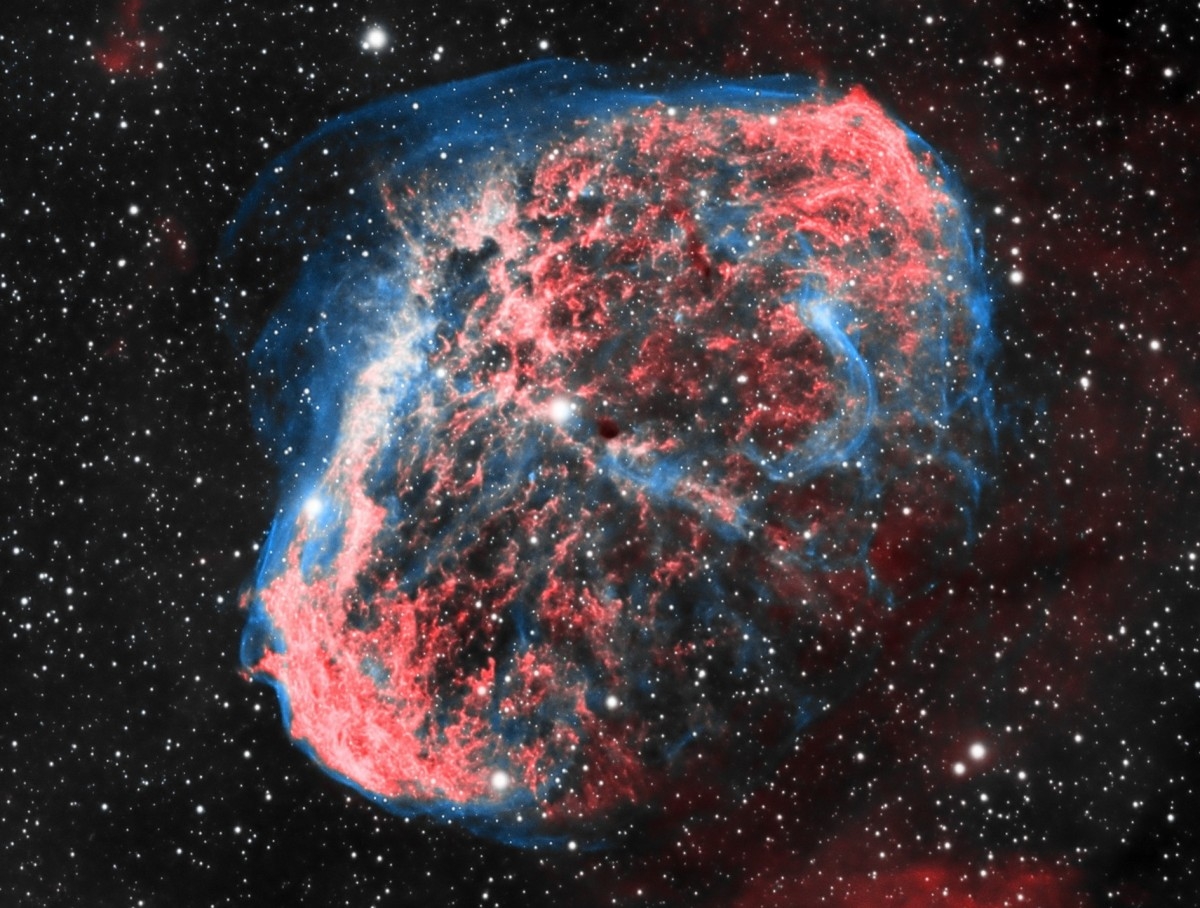
For astrophotographers there is a faint silver lining to power shortages: darker skies mean a better view of the cosmos. During July's fuel-shortage blackouts, fellow group member Michel Makhlouta was able to capture the notoriously faint, 5000 light-years distant Crescent Nebula, through 18 hours’ worth of 10-minute exposures.
Habib explains that darker skies are also good for nature. Light pollution affects biodiversity by changing the reproductive habits of trees and insects, which can have a knock-on effect throughout an ecosystem, he says. (Michel Makhlouta)
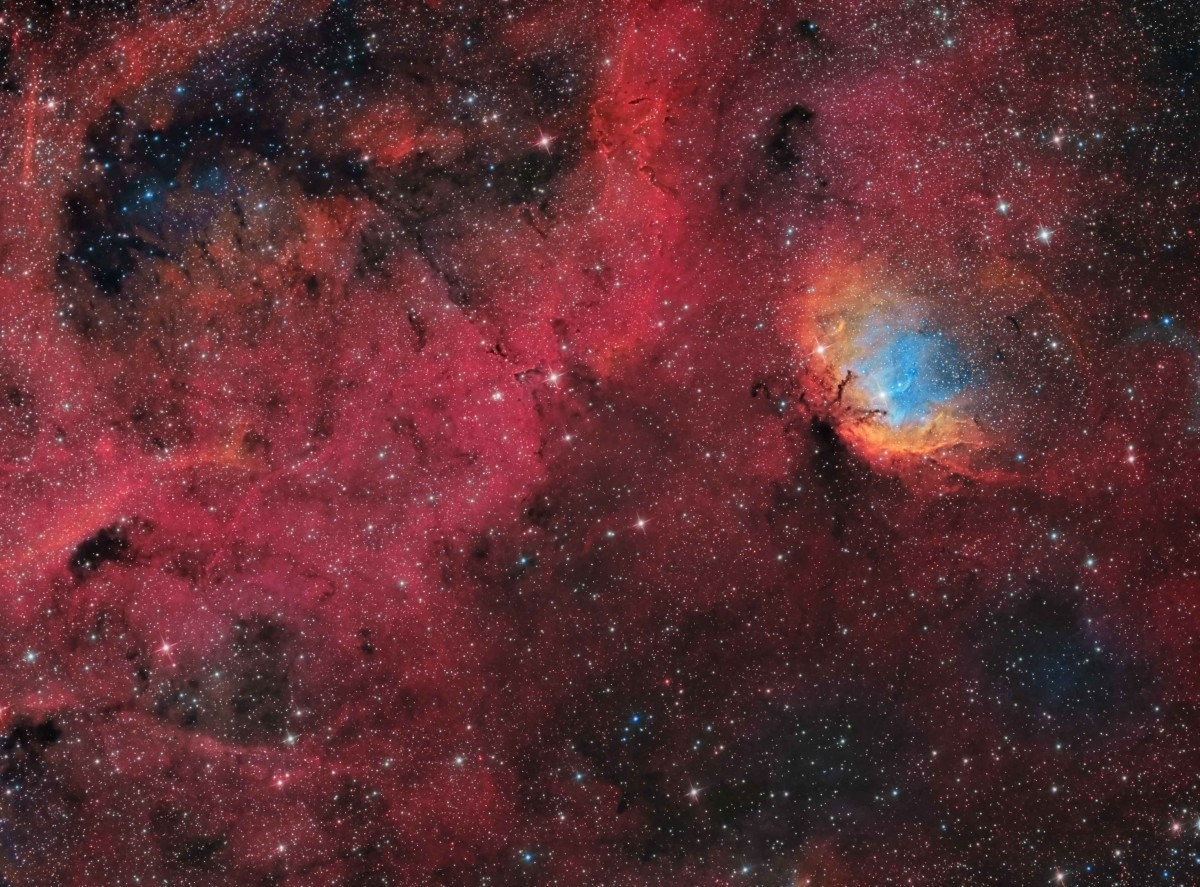
Habib’s attempts to help his country reach a happy medium for both wildlife and humans by running a light pollution training initiative for municipality leaders have all hit obstacles. “This time it was stopped by Covid, before that it was stopped by snow and the first time it was stopped by the revolution,” he says.
In the meantime, fellow astrophotographer Anthony Saab, a musician and producer, has chosen to photograph some cosmic wildlife tonight - the 6000-light-years-distant Tulip Nebula, above. (Anthony Saab)

“What keeps me hooked as well is definitely the company, the community here,” Caracache (above) says of his astrophotographer peers. “The nice thing about it is that we’re all helping each other, we share knowledge and we all celebrate whenever someone gets the NASA APOD.”
Caracache says the frustrations of living in Lebanon are tremendous, “People now are starting to feel hopeless and these days all I hear around me are people leaving the country, unfortunately... there’s no light at the end of the tunnel”. (Elizabeth Fitt)
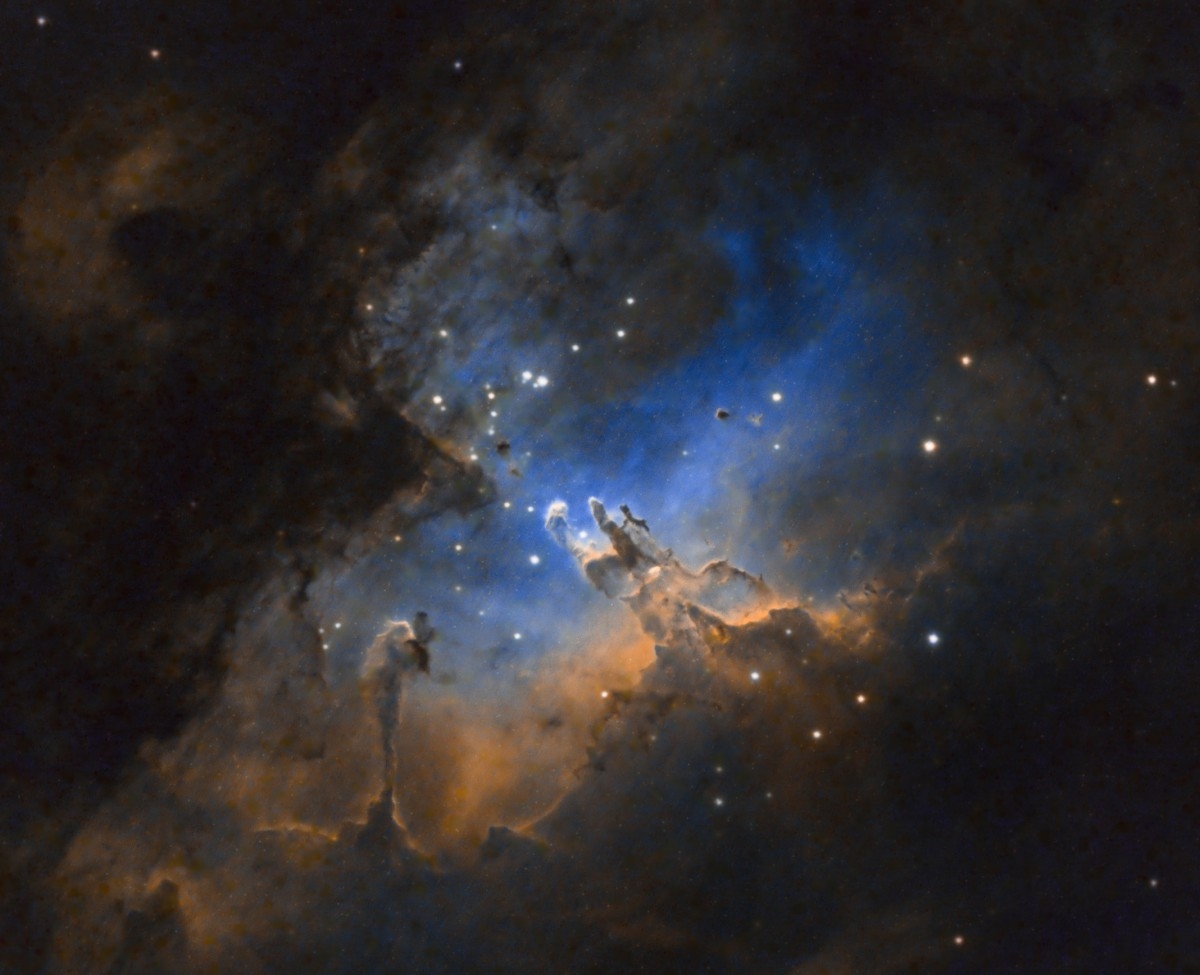
Amidst the frustrations of day-to-day living in a failing state, these men have found their own kind of light at the end of a different sort of tunnel. Concentrating photons through their telescopes, they bring us back snippets of the unseeable from vast distances across time and space, such as this image of “The Pillars of Creation", part of the Eagle Nebula, captured by Caracache from Lebanon at a distance of around 7000 light years, in August 2018.
“Actually we’re connecting with the universe,” Caracache says. “We were always here, the earth, the humans and the skies. But people forget to look up. And this is what changes your perspective of things.” (Daniel Caracache)
Middle East Eye propose une couverture et une analyse indépendantes et incomparables du Moyen-Orient, de l’Afrique du Nord et d’autres régions du monde. Pour en savoir plus sur la reprise de ce contenu et les frais qui s’appliquent, veuillez remplir ce formulaire [en anglais]. Pour en savoir plus sur MEE, cliquez ici [en anglais].


